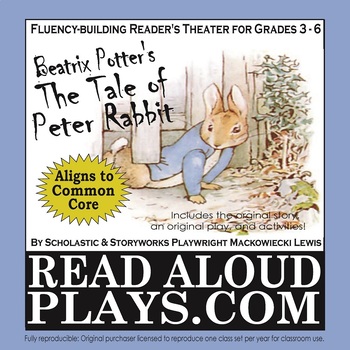Read-Aloud Plays: Tale of Peter Rabbit Readers Theater
- PDF
- Easel Activity
Description
The last time my 5th graders performed this for our primary students, well, in 20 years of having kids produce plays, I've never seen a funnier play or a more engaged audience! This original read-aloud play uses Beatrix Potter's classic story to focus on peer pressure and character traits. It comes with the original text and three worksheets: vocabulary and grammar development, fact and opinion maze, and a compare and contrast exercise. The play is for from 7 to 11 students, depending on your needs, or split your class into small groups and have each group enact it in their own way. Use it in grades 3 to 6 to improve fluency, engage learners, and build comprehension skills, or have older students produce it for youngers (it's been used in community theaters as far away as South Africa). As with all my plays, the original purchaser is licensed to print a class set every year! For more information visit ReadAloudPlays.com. Thanks!






